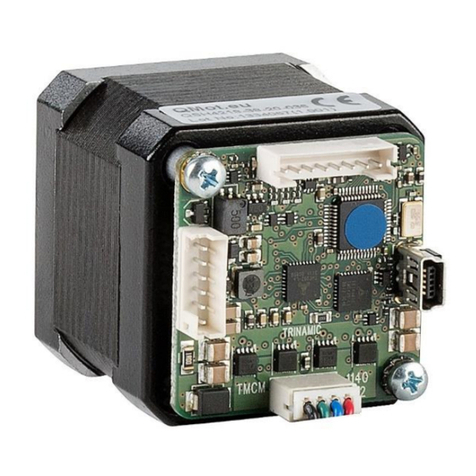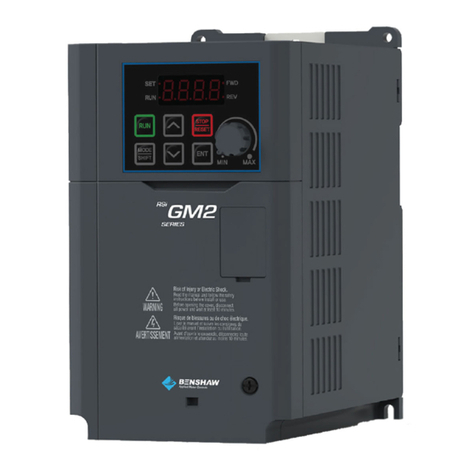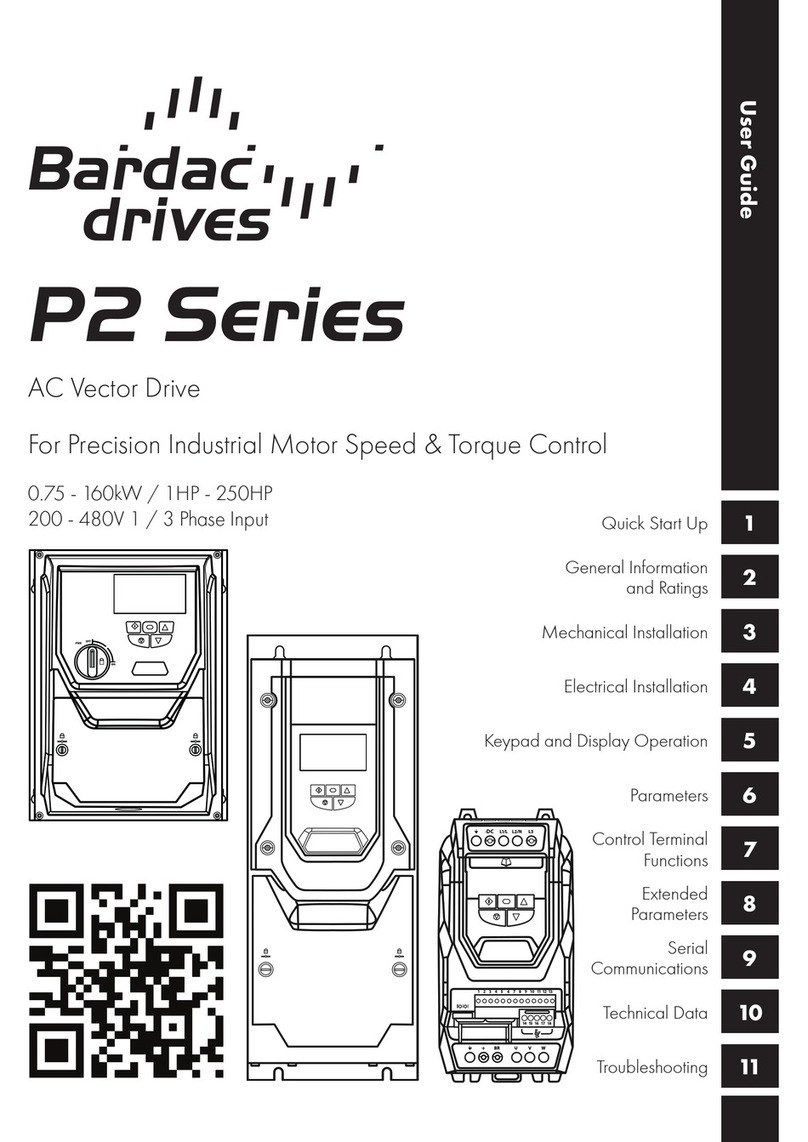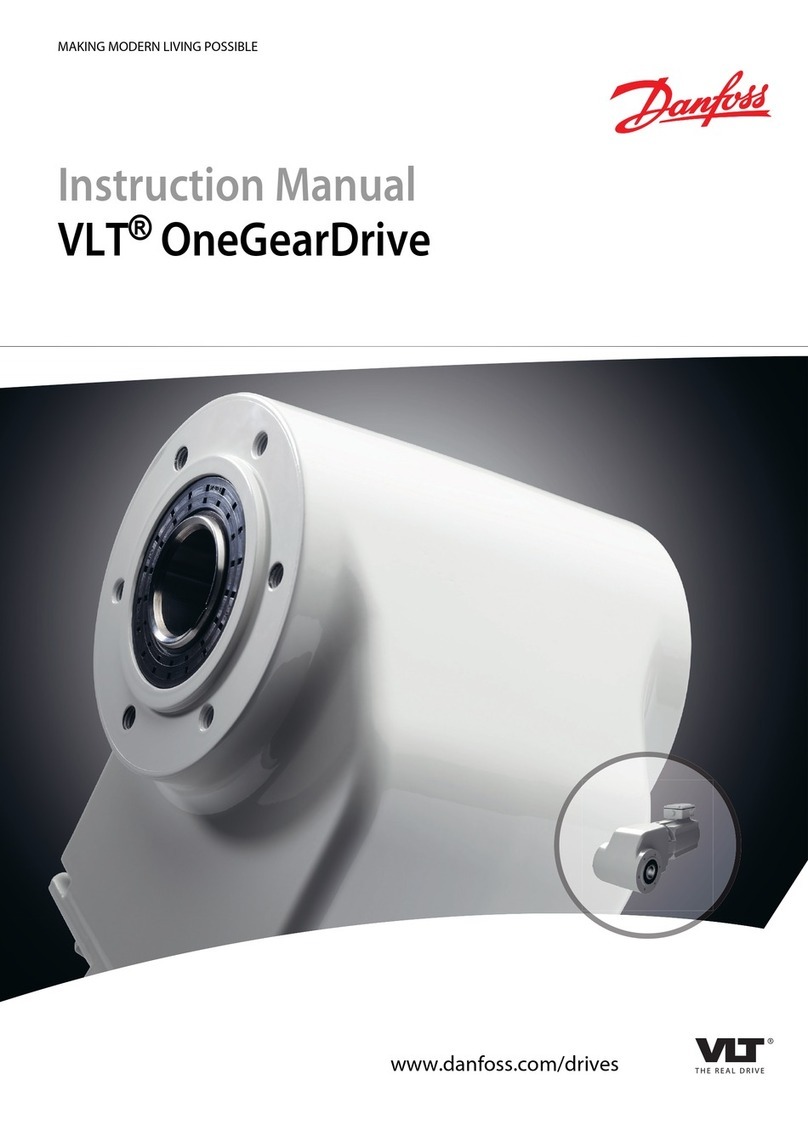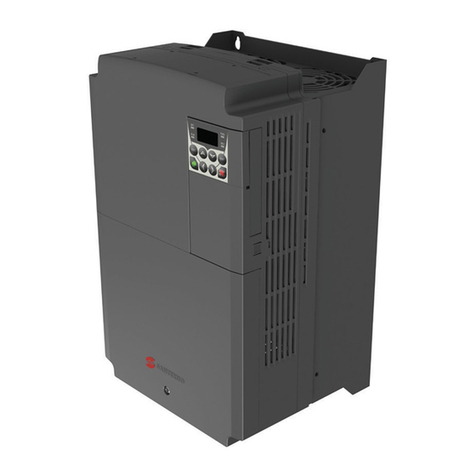Trinamic PANdrive PD-1140 User manual

MECHATRONIC DRIVE WITH STEPPER MOTOR PANdrive
TRINAMIC Motion Control GmbH & Co. KG
Hamburg, Germany
www.trinamic.com
Hardware Version V1.2
HARDWARE MANUAL
++PD-1140
+ +
UNIQUE FEATURES:
Stepper Motor with
Controller / Driver
0.22 - 0.70 Nm / 24 V DC
sensOstep™Encoder
USB, RS485, and CAN

PD-1140 Hardware Manual (Rev. 1.02 / 2013-MAR-26) 2
www.trinamic.com
Table of Contents
2Features........................................................................................................................................................................... 3
3Order Codes ................................................................................................................................................................... 5
4Mechanical and Electrical Interfacing..................................................................................................................... 6
4.1 Dimensions ........................................................................................................................................................... 6
4.2 Stepper Motor Specifications ........................................................................................................................... 7
4.3 Connectors of PD-1140....................................................................................................................................... 8
4.3.1 Power and Communication Connector................................................................................................... 9
4.3.1.1 Power Supply ................................................................................................................................................ 9
4.3.1.2 RS485 ............................................................................................................................................................. 10
4.3.1.3 CAN................................................................................................................................................................. 11
4.3.2 Multipurpose I/O Connector..................................................................................................................... 12
4.3.2.1 Digital Inputs IN_1, IN_2, IN_3 .............................................................................................................. 13
4.3.2.2 Analog Input IN_0 ..................................................................................................................................... 14
4.3.2.3 Outputs OUT_0, OUT_1 .............................................................................................................................. 14
4.3.3 Motor Connector.......................................................................................................................................... 15
4.3.4 Mini-USB Connector .................................................................................................................................... 16
5Reset to Factory Defaults......................................................................................................................................... 17
6On-Board LEDs............................................................................................................................................................. 18
7Operational Ratings ................................................................................................................................................... 19
8Torque Curves ............................................................................................................................................................. 20
8.1.1 PD42-1-1140 Torque Curve........................................................................................................................ 20
8.1.2 PD42-2-1140 Torque Curve........................................................................................................................ 20
8.1.3 PD42-3-1140 Torque Curve........................................................................................................................ 21
8.1.4 PD42-4-1140 Torque Curve........................................................................................................................ 21
9Functional Description.............................................................................................................................................. 22
10 PD-1140 Operational Description........................................................................................................................... 23
10.1 Calculation: Velocity and Acceleration vs. Microstep and Fullstep Frequency ................................ 23
11 Life Support Policy..................................................................................................................................................... 25
12 Revision History.......................................................................................................................................................... 26
12.1 Document Revision ........................................................................................................................................... 26
12.2 Hardware Revision ............................................................................................................................................ 26
13 References .................................................................................................................................................................... 26

PD-1140 Hardware Manual (Rev. 1.02 / 2013-MAR-26) 3
www.trinamic.com
2Features
The PANdrive™PD-1140 is a full mechatronic solution with state of the art feature set. It is highly
integrated and offers a convenient handling. The PD-1140 includes a stepper motor, controller/driver
electronics, and TRINAMICs sensOstep™encoder. It can be used in many decentralized applications and
has been designed for 0.20… 0.70 Nm max. holding torque and 24V DC nominal supply voltage. With its
high energy efficiency from TRINAMICs coolStep technology cost for power consumption is kept down.
The TMCL™ firmware allows for standalone operation and direct mode.
MAIN CHARACTERISTICS
Motion controller
-Motion profile calculation in real-time
-On the fly alteration of motor parameters (e.g. position, velocity, acceleration)
-High performance microcontroller for overall system control and serial communication protocol
handling
Bipolar stepper motor driver
-Up to 256 microsteps per full step
-High-efficient operation, low power dissipation
-Dynamic current control
-Integrated protection
-stallGuard2 feature for stall detection
-coolStep feature for reduced power consumption and heat dissipation
Encoder
-sensOstep magnetic encoder (1024 increments per rotation) e.g. for step-loss detection under all
operating conditions and positioning supervision
Interfaces
-RS485 2-wire communication interface
-CAN 2.0B communication interface
-USB full speed (12Mbit/s) device interface
-4 multipurpose inputs:
-3x general-purpose digital inputs
(Alternate functions: STOP_L / STOP_R / HOME switch inputs or A/B/N encoder input)
-1x dedicated analog input
-2 general purpose outputs
-1x open-drain 1A max.
-1x +5V supply output (can be switched on/off in software)
Software
-TMCL: standalone operation or remote controlled operation,
program memory (non volatile) for up to 2048 TMCL commands, and
PC-based application development software TMCL-IDE available for free.
Electrical and mechanical data
-Supply voltage: +24 V DC nominal (9… 28 V DC)
-Motor current: up to 2 A RMS / 2.8 A peak (programmable)
-0.22… 0.70 Nm max. holding torque (depends on motor)
Refer to separate TMCL Firmware Manual, too.

PD-1140 Hardware Manual (Rev. 1.02 / 2013-MAR-26) 4
www.trinamic.com
TRINAMICS UNIQUE FEATURES –EASY TO USE WITH TMCL
stallGuard2™stallGuard2 is a high-precision sensorless load measurement using the back EMF on the
coils. It can be used for stall detection as well as other uses at loads below those which
stall the motor. The stallGuard2 measurement value changes linearly over a wide range
of load, velocity, and current settings. At maximum motor load, the value goes to zero or
near to zero. This is the most energy-efficient point of operation for the motor.
Load
[Nm]
stallGuard2
Initial stallGuard2
(SG) value: 100%
Max. load
stallGuard2 (SG) value: 0
Maximum load reached.
Motor close to stall.
Motor stalls
Figure 2.1 stallGuard2 load measurement SG as a function of load
coolStep™coolStep is a load-adaptive automatic current scaling based on the load measurement via
stallGuard2 adapting the required current to the load. Energy consumption can be
reduced by as much as 75%. coolStep allows substantial energy savings, especially for
motors which see varying loads or operate at a high duty cycle. Because a stepper motor
application needs to work with a torque reserve of 30% to 50%, even a constant-load
application allows significant energy savings because coolStep automatically enables
torque reserve when required. Reducing power consumption keeps the system cooler,
increases motor life, and allows reducing cost.
0
0,1
0,2
0,3
0,4
0,5
0,6
0,7
0,8
0,9
0 50 100 150 200 250 300 350
Efficiency
Velocity [RPM]
Efficiency with coolStep
Efficiency with 50% torque reserve
Figure 2.2 Energy efficiency example with coolStep

PD-1140 Hardware Manual (Rev. 1.02 / 2013-MAR-26) 5
www.trinamic.com
3Order Codes
The PD-1140 is currently available with four NEMA 17 stepper motors.
The length of the PANdrives is specified without the length of the axis. For the overall length of the
product please add 24 mm.
Order code
Description
Size (mm3)
PD42-1-1140-option
PANdrive 0.22Nm max. holding torque
42 x 42 x 46.5
PD42-2-1140-option
PANdrive 0.36Nm max. holding torque
42 x 42 x 51
PD42-3-1140-option
PANdrive 0.44Nm max. holding torque
42 x 42 x 60
PD42-4-1140-option
PANdrive 0.70Nm max. holding torque
42 x 42 x 73
Table 3.1 PD-1140 order codes
The following options are available:
Firmware option
Description
Order code example:
-TMCL
Module pre-programmed with TMCL firmware
PD42-1-1140-TMCL
Table 3.2 PD-1140 firmware options
A cable loom set is available for this module:
Order code
Description
PD-1140-CABLE
Cable loom for PD-1140:
-1x cable for power and communication connector (length 200mm)
-1x cable for multipurpose In/Out connector (length 200mm)
-1x USB type A connector to mini-USB type B connector cable (length 1.5m)
Table 3.2 Cable loom order codes

PD-1140 Hardware Manual (Rev. 1.02 / 2013-MAR-26) 6
www.trinamic.com
4Mechanical and Electrical Interfacing
4.1 Dimensions
The PD-1140 includes the TMCM-1140 stepper motor controller/driver module, the magnetic encoder based
on sensOstep technology and a NEMA17 bipolar stepper motor. Currently, there is a choice between four
NEMA 17/42mm bipolar stepper motors with different lengths and different holding torques.
Length
42±1
2
22-0.05
24±1
20
5
4.5
13 max
37
22
42±1
42±1
5
42±1
34
2xM3
42±1
37
34
3
FRONT VIEW REAR VIEW
Figure 4.1 PD-1140 dimensions
Model
Length of motor
PD42-1-1140
33.5±1 mm
PD42-2-1140
38±1 mm
PD42-3-1140
47±1 mm
PD42-4-1140
60±1 mm

PD-1140 Hardware Manual (Rev. 1.02 / 2013-MAR-26) 7
www.trinamic.com
4.2 Stepper Motor Specifications
MAIN CHARACTERISTICS OF FOUR DIFFERENT MOTORS AVAILABLE AS PART OF THE PD-1140
Specifications
Parameter
Units
QSH4218
-34-20-022
-38-20-036
-47-20-044
-60-20-070
Step angle
˚
1.8
1.8
1.8
1.8
Step angle accuracy
%
+/-5
+/-5
+/-5
+/-5
Ambient temperature
°C
-20 … +50
-20 … +50
-20 … +50
-20 … +50
Max. motor temperature
°C
80
80
80
80
Shaft radial play (450g load)
mm
0.02
0.02
0.02
0.02
Shaft axial play (450g load)
mm
0.08
0.08
0.08
0.08
Max radial force
(20mm from front flange)
N
28
28
28
28
Max axial force
N
10
10
10
10
Rated voltage
VRATED
V
2.0
2.4
2.4
4.4
Rated phase current
IRMS RATED
A
2.0
2.0
2.0
2.0
Phase resistance at 20°C
RCOIL
Ω
1.0
1.2
1.4
2.3
Phase inductance (typ.)
mH
1.6
2.2
2.1
6.0
Holding torque
Nm
0.22
0.36
0.44
0.70
Insulation class
B
B
B
B
Rotor inertia
g cm2
35
57
68
102
Weight
kg
0.22
0.24
0.35
0.5
Table 4.1: NEMA 17 / 42mm stepper motor technical data

PD-1140 Hardware Manual (Rev. 1.02 / 2013-MAR-26) 8
www.trinamic.com
4.3 Connectors of PD-1140
The controller/driver board of the PD-1140 offers four connectors including the motor connector which is
used for attaching the motor coils to the electronics. The power and communication connector is used
for power supply, CAN interface, and RS485 interface. The 8pin multipurpose I/O connector offers four
multipurpose inputs and two general purpose outputs. Further, there is a connector for the USB interface.
USB
Motor
14
Multi-purpose
I/O
1
8
Power and
Communication
1
6
Figure 4.2 Overview connectors
Label
Connector type
Mating connector type
Power and
Communication
Connector
JST B6B-PH-K-S
(JST PH series, 6pins, 2mm pitch)
Connector housing: JST PHR-6
Contacts: JST SPH-002T-P0.5S
Wire: 0.22mm2, AWG 24
Multipurpose
I/O Connector
JST B8B-PH-K-S
(JST PH series, 8pins, 2mm pitch)
Connector housing: JST PHR-8
Contacts: JST SPH-002T-P0.5S
Wire: 0.22mm2, AWG 24
Motor
Connector
JST B4B-PH-K-S
(JST PH series, 4pins, 2mm pitch)
Connector housing: JST PHR-4
Contacts: JST SPH-002T-P0.5S
Wire: 0.22mm2, AWG 24
Mini-USB
Connector
Molex 500075-1517
Mini USB Type B vertical receptacle
Any standard mini-USB plug
Figure 4.3 Connectors and mating connectors, contacts and applicable wire

PD-1140 Hardware Manual (Rev. 1.02 / 2013-MAR-26) 9
www.trinamic.com
4.3.1 Power and Communication Connector
A 6pin JST PH-series 2mm pitch single row connector is used for power supply, RS485 and CAN serial
communication. Please note the additional power supply information in chapter 4.3.1.1.
Note: CAN interface will be de-activated in case USB is connected due to internal sharing of hardware
resources.
6
1
Pin
Label
Direction
Description
1
GND
Power (GND)
System and signal ground
2
VDD
Power (Supply)
VDD (+9V…+28V)
3
RS485+
Bidirectional
RS485 interface, diff. signal (non-inverting)
4
RS485-
Bidirectional
RS485 interface, diff. signal (inverting)
5
CAN_H
Bidirectional
CAN interface, diff. signal (non-inverting)
6
CAN_L
Bidirectional
CAN interface, diff. signal (inverting)
Table 4.1 Connector for power supply and interfaces
4.3.1.1 Power Supply
For proper operation care has to be taken with regard to power supply concept and design. Due to space
restrictions the TMCM-1140 includes about 40µF/35V of supply filter capacitors. These are ceramic
capacitors which have been selected for high reliability and long life time. The module includes a 28V
suppressor diode for over-voltage protection. There is no reverse polarity protection. The module will
short any reversed supply voltage due to the suppressor diode (uni-directional version) and the internal
diodes of the driver transistors.
It is important that the power supply voltage is kept below the upper limit of 28V (please see also
chapter 6, operating values). Otherwise the driver electronics might be seriously damaged! Especially,
when the selected operating voltage is near the upper limit a regulated power supply is highly
recommended.
It is recommended to connect an electrolytic capacitor of significant size (e.g. 470µF/35V) to the power
supply lines next to the PD42-1140!
In addition to power stabilization (buffer) and filtering this added capacitor will also reduce any voltage
spikes which might otherwise occur from a combination of high inductance power supply wires and the
ceramic capacitors. In addition it will limit slew-rate of power supply voltage at the module. The low ESR
of ceramic-only filter capacitors may cause stability problems with some switching power supplies.

PD-1140 Hardware Manual (Rev. 1.02 / 2013-MAR-26) 10
www.trinamic.com
4.3.1.2 RS485
For remote control and communication with a host system the TMCM-1140 provides a two wire RS485
bus interface. For proper operation the following items should be taken into account when setting up an
RS485 network:
1. BUS STRUCTURE:
The network topology should follow a bus structure as closely as possible. That is, the
connection between each node and the bus itself should be as short as possible. Basically, it
should be short compared to the length of the bus.
c:> node
1
node
n- 1
node
n
Host Slave Slave Slave
RS485
termination
resistor
(120 Ohm)
termination
resistor
(120 Ohm)
}
keep distance as
short as possible
Figure 4.4 Bus structure
2. BUS TERMINATION:
Especially for longer busses and/or multiple nodes connected to the bus and/or high
communication speeds, the bus should be properly terminated at both ends. The TMCM-1140
does not integrate any termination resistor. Therefore, 120 Ohm termination resistors at both
ends of the bus have to be added externally.
3. NUMBER OF NODES:
The RS485 electrical interface standard (EIA-485) allows up to 32 nodes to be connected to a
single bus. The bus transceiver used on the PD-1140 units (SN65HVD3082ED) has just 1/8th of the
standard bus load and allows a maximum of 256 units to be connected to a single RS485 bus.
4. NO FLOATING BUS LINES:
Avoid floating bus lines while neither the host/master nor one of the slaves along the bus line is
transmitting data (all bus nodes switched to receive mode). Floating bus lines may lead to
communication errors. In order to ensure valid signals on the bus it is recommended to use a
resistor network connecting both bus lines to well defined logic levels. In contrast to the
termination resistors this network is normally required just once per bus. Certain RS485 interface
converters available for PCs already include these additional resistors (e.g. USB-2-485).
node
n- 1
node
n
Slave Slave
termination
resistor
(120 Ohm)
+5V
GND
pull-up (1k)
pull-down (1k)
RS485- / RS485B
RS485+ / RS485A
Figure 4.5 Bus lines with resistor network

PD-1140 Hardware Manual (Rev. 1.02 / 2013-MAR-26) 11
www.trinamic.com
4.3.1.3 CAN
For remote control and communication with a host system the TMCM-1140 provides a CAN bus interface.
Please note that the CAN interface is not available in case USB is connected. For proper operation the
following items should be taken into account when setting up a CAN network:
1. BUS STRUCTURE:
The network topology should follow a bus structure as closely as possible. That is, the
connection between each node and the bus itself should be as short as possible. Basically, it
should be short compared to the length of the bus.
c:> node
1
node
n- 1
node
n
Host Slave Slave Slave
CAN
termination
resistor
(120 Ohm)
termination
resistor
(120 Ohm)
}
keep distance as
short as possible
Figure 4.6: CAN bus structure
2. BUS TERMINATION:
Especially for longer busses and/or multiple nodes connected to the bus and/or high
communication speeds, the bus should be properly terminated at both ends. The TMCM-1140
does not integrate any termination resistor. Therefore, 120 Ohm termination resistors at both
ends of the bus have to be added externally.
3. NUMBER OF NODES:
The bus transceiver used on the TMCM-1140 units (TJA1050T) supports at least 110 nodes under
optimum conditions. Practically achievable number of nodes per CAN bus highly depends on bus
length (longer bus -> less nodes) and communication speed (higher speed -> less nodes).

PD-1140 Hardware Manual (Rev. 1.02 / 2013-MAR-26) 12
www.trinamic.com
4.3.2 Multipurpose I/O Connector
An 8pin JST PH-series 2mm pitch single row connector is available for all multipurpose inputs and
outputs.
8
1
Pin
Label
Direction
Description
1
GND
Power (GND)
System and signal ground
2
VDD
Power (Supply)
VDD, connected to VDD pin of the power and
communication connector
3
OUT_0
Output
Open-drain output (max. 1A)
Integrated freewheeling diode to VDD
4
OUT_1
Output
+5V supply output (max. 100mA)
Can be switched on/off in software
5
IN_0
Input
Dedicated analog input,
Input voltage range: 0..+10V
Resolution: 12bit (0..4095)
6
IN_1,
STOP_L,
ENC_A
Input
General purpose digital input (+24V compatible)
Alternate function 1: left stop switch input
Alternate function 2: external incremental
encoder channel A input
7
IN_2,
STOP_R,
ENC_B
Input
General purpose digital input (+24V compatible)
Alternate function 1: right stop switch input
Alternate function 2: external incremental
encoder channel B input
8
IN_3,
HOME,
ENC_N
Input
General purpose digital input (+24V compatible)
Alternate function 1: home switch input
Alternate function 2: external incremental
encoder index / zero channel input
Table 4.4 Multipurpose I/O connector
Note:
-All inputs have resistor based voltage input dividers with protection diodes. These resistors
also ensure a valid GND level when left unconnected.
-For all digital inputs (IN_1, IN_2, IN_3) a 2k2 pull-up resistor to +5V can be activated. Then these
inputs have a default (unconnected) logic level of 1 and an external switch to GND can be
connected. This might be especially interesting in case these inputs are used as STOP_L /
STOP_R and HOME switch inputs (alternate function 1) or as encoder input for an external
incremental A/B/N encoder with open-collector outputs (pull-ups are not necessary for encoder
with push-pull outputs).

PD-1140 Hardware Manual (Rev. 1.02 / 2013-MAR-26) 13
www.trinamic.com
4.3.2.1 Digital Inputs IN_1, IN_2, IN_3
The eight pin connector of the TMCM-1140 provides three multipurpose digital inputs IN_1, IN_2 and
IN_3.
All three inputs accept up-to +24V input signals. They are protected against these higher voltages using
voltage resistor dividers together with limiting diodes against voltages below 0V (GND) and above +3.3V
DC (see figure below).
+3.3V
IN_1
IN_2
IN_3
microcontroller (all)
and TMC429 (IN_0, IN_1)
15k
22k 33pF
GND GND GND
common switch for all
three digital inputs
2k2
+5V
Figure 4.7 General purpose inputs (simplified input circuit)
Refer to the PD-1140 TMCL Firmware Manual (SIO command) for further information about switching the
pull-up resistors for all digital inputs on / off.
The three digital inputs have alternate functionality depending on configuration in software. The
following functions are available:
Label
(pin)
Default function
Alternate function 1
Alternate function 2
IN_1 (6)
General purpose
digital input
STOP_L - left stop switch input,
connected to processor and
TMC429 REF input (supporting
left stop functionality in
hardware)
ENC_A - external incremental
encoder input channel A,
connected to processor encoder
counter input
IN_2 (7)
General purpose
digital input
STOP_R - right stop switch input,
connected to processor and
TMC429 REF input (supporting
right stop switch functionality in
hardware)
ENC_B - external incremental
encoder input channel B,
connected to processor encoder
counter input
IN_3 (8)
General purpose
digital input
HOME - home switch input,
connected to processor
ENC_N - external incremental
encoder input index / zero
channel, connected to processor
interrupt input
Table 4.7 Multipurpose inputs / alternate functions

PD-1140 Hardware Manual (Rev. 1.02 / 2013-MAR-26) 14
www.trinamic.com
All three digital inputs are connected to the on-board processor and can be used as general purpose
digital inputs (default).
4.3.2.2 Analog Input IN_0
The eight pin connector of the TMCM-1140 provides one dedicated analog input IN_0.
This dedicated analog input offers a full scale input range of 0… +10 V with a resolution of the internal
analog-to-digital converter of the microcontroller of 12bit (0… 4095).
The input is protected against higher voltages up-to +24 V using voltage resistor dividers together with
limiting diodes against voltages below 0 V (GND) and above +3.3 V DC (see figure below).
+3.3V
IN_0
ADC input
(microcontroller)
22k
10k
100nF
GND GND GND
Figure 4.8 General purpose inputs (simplified input circuit)
4.3.2.3 Outputs OUT_0, OUT_1
The eight pin connector of the TMCM-1140 offers two general purpose outputs OUT_0 and OUT_1. OUT_0
is an open-drain output capable of switching up to 1A. The output of the N-channel MOSFET transistors is
connected to a freewheeling diode for protection against voltage spikes especially from inductive loads
(relais etc.) above supply voltage (see figure below).
Note:
OUT_0 offers a freewheeling diode connected to VDD supply voltage. Therefore, this output should never
be connected to any voltage above supply voltage level of the module.
VDD
microcontroller
GND
Figure 4.9 General purpose output OUT_0

PD-1140 Hardware Manual (Rev. 1.02 / 2013-MAR-26) 15
www.trinamic.com
In contrast OUT_1 is able to supply +5V (100mA max.) to an external load. An integrated P-channel
MOSFET allows to switch on / off this +5V supply in software (see figure below). This output might be
used in order to supply +5V to an external encoder circuit.
+5V
microcontroller
GND
OUT_0
GND
100pF 10k
Figure 4.10 General purpose output OUT_1
4.3.3 Motor Connector
As motor connector a 4pin JST PH-series 2mm pitch single row connector is available. The motor
connector is used for connecting the four motor wires of the two motor coils of the bipolar stepper
motor to the electronics.
4
1
Pin
Label
Direction
Description
1
OB2
Output
Pin 2 of motor coil B
2
OB1
Output
Pin 1 of motor coil B
3
OA2
Output
Pin 2 of motor coil A
4
OA1
Output
Pin 1 of motor coil A
Table 4.5 Motor connector
Example for connecting the QSH4218 NEMA 17 / 42mm stepper motors:
M
A
black
green
B
blue
red
TMCM-1140
QS4218 Motor
Motor connector pin
Cable color
Coil
Description
1
Red
B
Motor coil B pin 1
2
Blue
B-
Motor coil B pin 2
3
Green
A-
Motor coil A pin 2
4
Black
A
Motor coil A pin 1

PD-1140 Hardware Manual (Rev. 1.02 / 2013-MAR-26) 16
www.trinamic.com
4.3.4 Mini-USB Connector
A 5pin mini-USB connector is available on-board for serial communication (as alternative to the CAN and
RS485 interface). This module supports USB 2.0 Full-Speed (12Mbit/s) connections.
CAN interface will be de-activated as soon as USB is connected due to internal sharing of hardware
resources.
1
5
Pin
Label
Direction
Description
1
VBUS
Power
(supply input)
+5V supply from host
2
D-
Bidirectional
USB Data –
3
D+
Bidirectional
USB Data +
4
ID
Power (GND)
Connected to signal and system ground
5
GND
Power (GND)
Connected to signal and system ground
Table 4.6 Connector for USB
For remote control and communication with a host system the TMCM-1140 provides a USB 2.0 full-speed
(12Mbit/s) interface (mini-USB connector). As soon as a USB-Host is connected the module will accept
commands via USB.
USB BUS POWERED OPERATION MODE
The TMCM-1140 supports both, USB self powered operation (when an external power is supplied via the
power supply connector) and USB bus powered operation, (no external power supply via power supply
connector).
On-board digital core logic will be powered via USB in case no other supply is connected (USB bus
powered operation). The digital core logic comprehends the microcontroller itself and also the EEPROM.
The USB bus powered operation mode has been implemented to enable configuration, parameter
settings, read-outs, firmware updates, etc. by just connecting an USB cable between module and host PC.
No additional cabling or external devices (e.g. power supply) are required.
Please note that the module might draw current from the USB +5V bus supply even in USB self powered
operation depending on the voltage level of this supply.
Motor movements are not possible in this operation mode. Therefore, connect the power connector and
change to USB self powered operation mode.

PD-1140 Hardware Manual (Rev. 1.02 / 2013-MAR-26) 17
www.trinamic.com
5Reset to Factory Defaults
It is possible to reset the PD-1140 to factory default settings without establishing a communication link.
This might be helpful in case communication parameters of the preferred interface have been set to
unknown values or got accidentally lost.
For this procedure two pads on the bottom side of the board have to be shortened.
Please perform the following steps:
1. Power supply off and USB cable disconnected
2. Short two pads as marked in Figure 5.1
3. Power up board (power via USB is sufficient for this purpose)
4. Wait until the on-board red and green LEDs start flashing fast (this might take a while)
5. Power-off board (disconnect USB cable)
6. Remove short between pads
7. After switching on power-supply / connecting USB cable all permanent settings have been
restored to factory defaults
Short these two pads
Figure 5.1 Reset to factory default settings

PD-1140 Hardware Manual (Rev. 1.02 / 2013-MAR-26) 18
www.trinamic.com
6On-Board LEDs
The board offers two LEDs in order to indicate board status. The function of both LEDs is dependent on
the firmware version. With standard TMCL firmware the green LED should be flashing slowly during
operation and the red LED should be off.
When there is no valid firmware programmed into the board or during firmware update the red and
green LEDs are permanently on.
BEHAVIOR OF LEDS WITH STANDARD TMCL FIRMWARE
Status
Label
Description
Heartbeat
Run
This green LED flashes slowly during operation.
Error
Error
This red LED lights up if an error occurs.
Red LED
Green LED
Figure 6.1 On-board LEDs

PD-1140 Hardware Manual (Rev. 1.02 / 2013-MAR-26) 19
www.trinamic.com
7Operational Ratings
The operational ratings show the intended or the characteristic ranges and should be used as design
values.
In no case shall the maximum values be exceeded!
Symbol
Parameter
Min
Typ
Max
Unit
VDD
Power supply voltage for operation
9
12… 24
28
V
ICOIL_peak
Motor coil current for sine wave peak
(chopper regulated, adjustable via software)
0
2.8
A
ICOIL_RMS
Continuous motor current (RMS)
0
2.0
A
IDD
Power supply current
<< ICOIL
1.4 * ICOIL
A
TENV
Environment temperature at rated current (no
forced cooling required)
Tbd
50
°C
Table 7.1 General operational ratings of module
OPERATIONAL RATINGS OF MULTIPURPOSE I/OS
Symbol
Parameter
Min
Typ
Max
Unit
VOUT_0
Voltage at open drain output OUT_0
0
+VDD
V
IOUT_0
Output sink current of open drain output
OUT_0
1
A
VOUT_1
Voltage at output OUT_1 (when switched on)
+5
V
IOUT_1
Output source current for OUT_1
100
mA
VIN_1/2/3
Input voltage for IN_1, IN_2, IN_3 (digital
inputs)
0
+VDD
V
VIN_L 1/2/3
Low level voltage for IN_1, IN_2 and IN_3
0
1.1
V
VIN_H 1/2/3
High level voltage for IN_1, IN_2 and IN_3
3.4
+VDD
V
VIN_0
Measurement range for analog input IN_0
0
+10
V
Table 7.2 Operational ratings of multipurpose I/Os

PD-1140 Hardware Manual (Rev. 1.02 / 2013-MAR-26) 20
www.trinamic.com
8Torque Curves
8.1.1 PD42-1-1140 Torque Curve
Figure 8.1 PD42-1-1140 torque vs. velocity 24V / 2A, 256µsteps
8.1.2 PD42-2-1140 Torque Curve
Figure 8.2 PD42-2-1140 torque vs. velocity 24V / 2A, 256µsteps
0,00
0,05
0,10
0,15
0,20
0,25
0,30
10 100 1000 10000
torque[Nm]
speed[rpm]
PD42-1-1140 - 2A RMS Phase Current, 256 uSteps
0,00
0,05
0,10
0,15
0,20
0,25
0,30
0,35
0,40
0,45
10 100 1000 10000
torque[Nm]
speed[rpm]
PD42-2-1140 - 2A RMS Phase Current, 256 uSteps
Other manuals for PANdrive PD-1140
1
Table of contents
Other Trinamic DC Drive manuals
Popular DC Drive manuals by other brands

Aerotech
Aerotech ASR1200 user manual
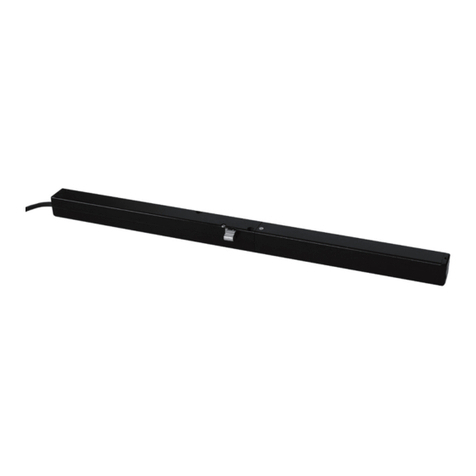
G-U
G-U ELTRAL K35 Assembly and operating instructions

Alpha getriebebau
Alpha getriebebau EPD300 operating instructions
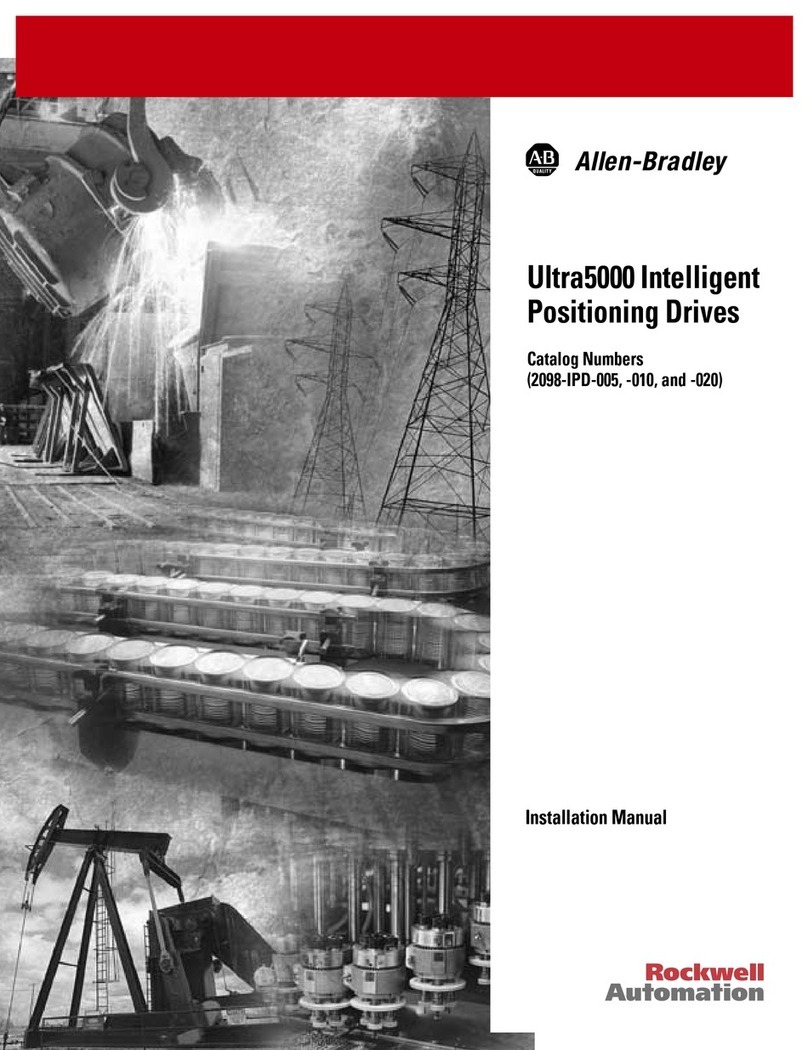
Rockwell Automation
Rockwell Automation Allen-Bradley Ultra5000 installation manual
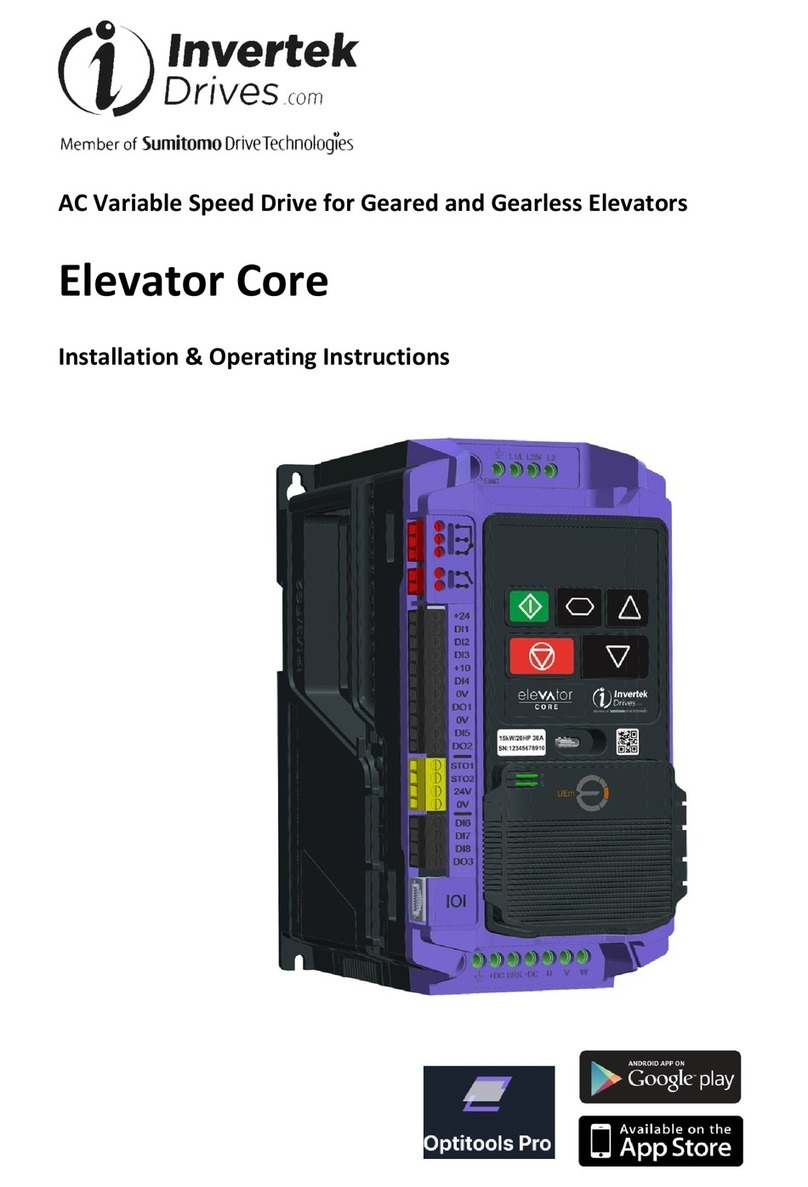
Sumitomo
Sumitomo Invertek Drives Elevator Core Installation & operating instructions
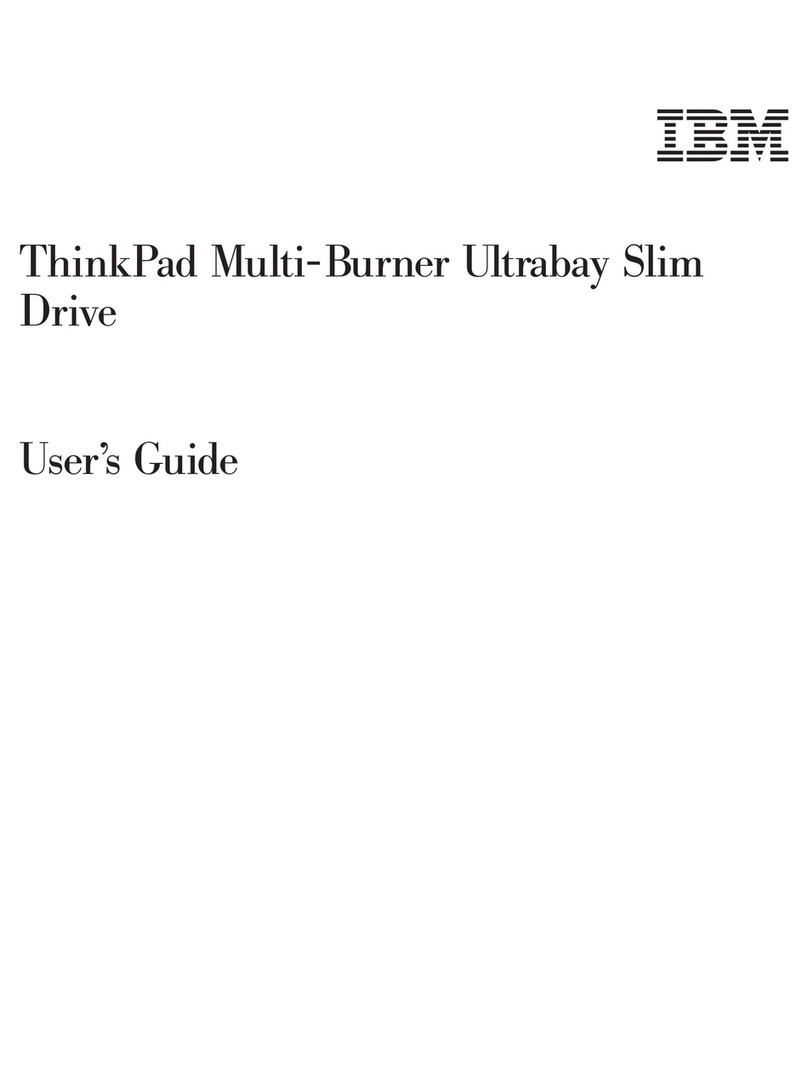
IBM
IBM ThinkPad 73P3297 user guide
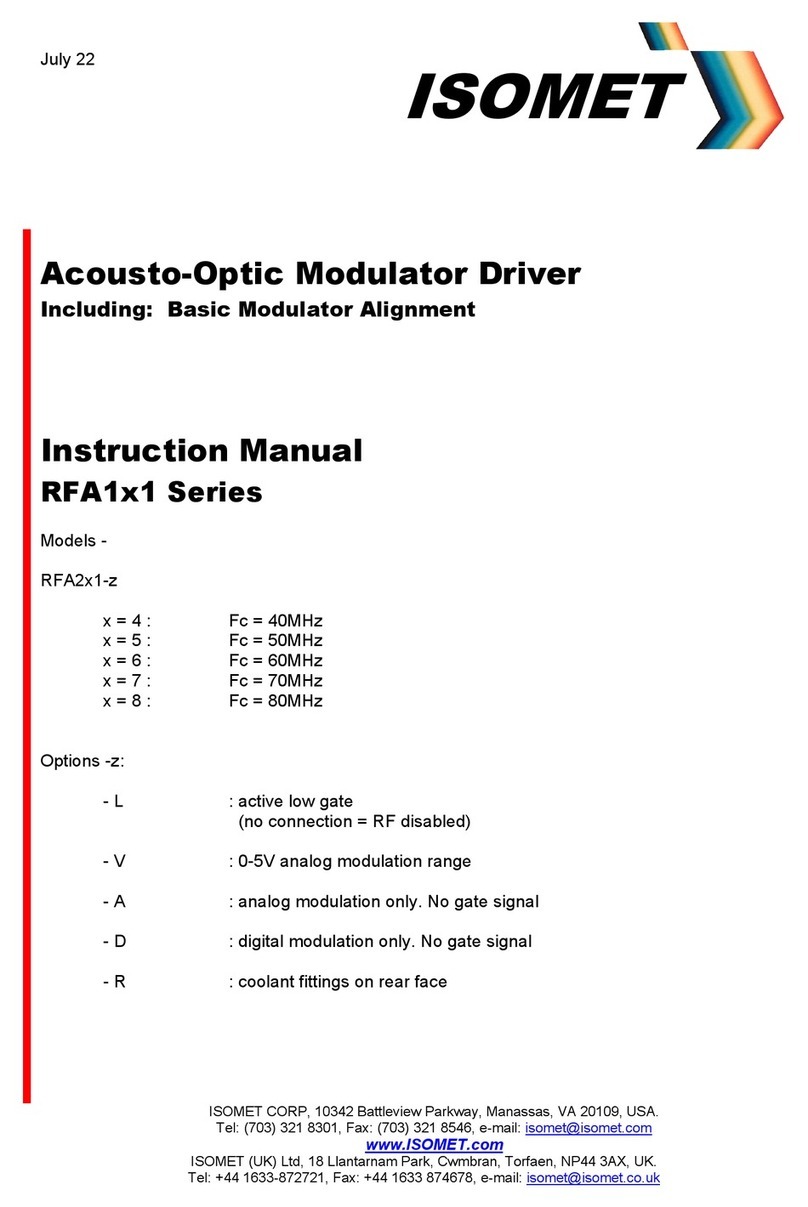
ISOMET
ISOMET RFA1 1 Series instruction manual
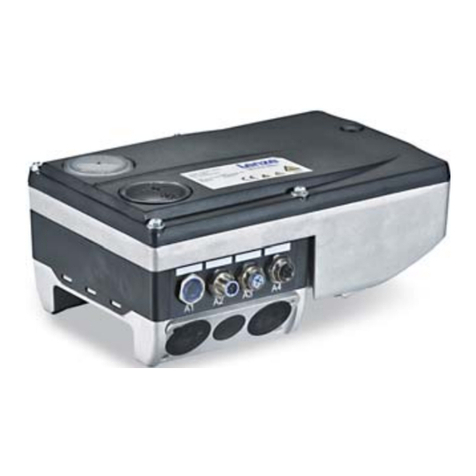
Lenze
Lenze 8400 motec Series Communications manual
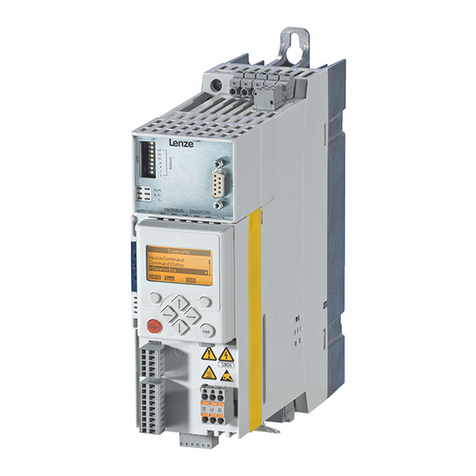
Lenze
Lenze L-force 8400 Series Mounting instructions
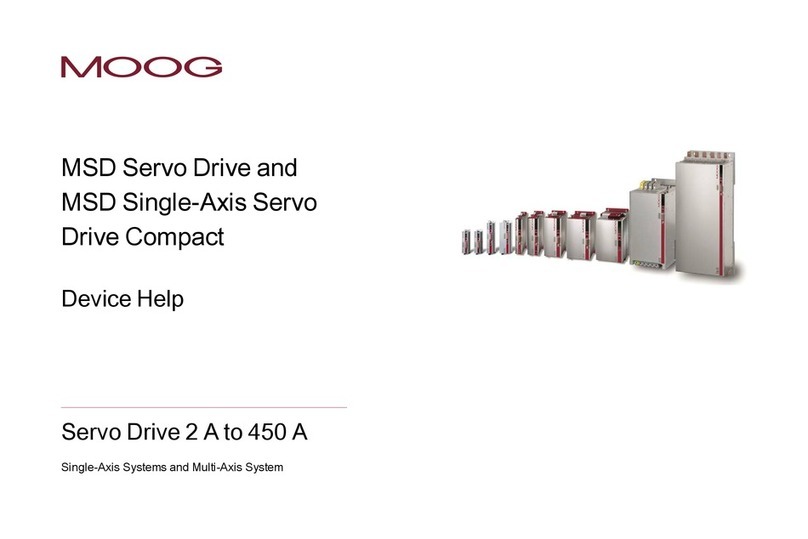
Moog
Moog MSD Servo Drive Series Device Help

Becker
Becker EVO 20 R PLUS BT Assembly and operating instructions

Siemens
Siemens SINAMICS G150 operating instructions
